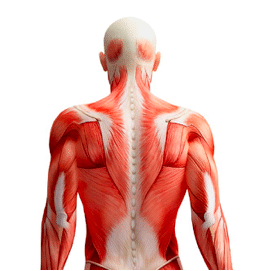So, my left shoulder is a hot mess right now. I have pain when I abduct and externally rotate my left arm. It is miserable. The pain was so severe that I decided to have an MRI done to assess the damage. Thankfully, the MRI revealed that I didn’t have a tear but moderate rotator cuff tendinopathy. This brought me a sense of relief in knowing that the injury wasn’t as serious as I thought it would be. However, I still wanted to figure out the root cause of my shoulder impairment and what exactly makes/keeps a shoulder happy.
Disclaimer: Before I start, I’ve been doing online training with Tony Bonvechio from The Strength House and I have to give him credit for making me understand this better. Thanks Tony!
I don’t know why I didn’t grasp this sooner, but pain in the body usually has an underlying reason or reasons why it exists. This was no different with regard to my shoulder. Initially, however, I sought to fix the problem at the source (i.e. rotator cuff) when there were most likely some things going on beneath the surface that contributed to the painful dysfunction. Accordingly, this was where Tony was kind enough to enlighten me with regard to shoulder issues. He said shoulder issues usually follow a hierarchy (with arrows pointing to a house structure analogy):
- Ribcage position (i.e. thoracic spine) → Foundation
- Shoulder blade position → Walls
- Humeral head position → Roof
So, the question had to be asked: was my rotator cuff pain the result of dysfunction at the humeral head, or did it go deeper than that? Well, I have to confess that it probably went deeper than that. My limited bodily awareness told me that my gross extension pattern (forward head posture, excessive lordosis, anterior pelvic tilt) and restricted shoulder blade mobility were a significant part of the blame for my bum shoulder.
To better understand this as a whole, Tony gave this example: If you’re benching and you don’t maintain an arch in your back (lack of upper back extension), your shoulder blades will tip forward (anterior tilt), which will cause your humerus to overly internally rotate, which could impinge upon your supraspinatus and biceps tendon. This example was definitely eye-opening in terms of how everything is connected and how a kink in the ol’ garden hose can prevent you from seeing a fully effective end product.
As a result, what does this suggest in terms of your training?
- I think a little more time focused on breathing drills such as this (especially if you are super hyper-extended like me and need to be brought back to a more neutral spine position) and thoracic spine mobility drills such as these (if you lack thoracic spine extension) will go a long way in treating the foundational component of the shoulder.
- Next, you want your scapula (i.e. shoulder blade) to be able to move in multiple directions such as retraction, protraction, upward rotation, depression, etc. Some mobility drills and exercises found in this article will do the trick for your scapula’s health and well being.
- Then, after you cover your bases relative to these areas, you can finally move on to the humerus, which is targeted by rotator cuff drills such as these.
Overall, I hope this wasn’t too confusing and that you have a little more clarity with regard to shoulder function and health. Remember that shoulder pain needs to be looked at beyond the source to see if there is something underneath the surface that might be actually causing you the discomfort.
As always…take care and SETTLE DOWN SLACKERS!!!!!!!
— Jay Corwell, Level 4 Elite Personal Trainer

